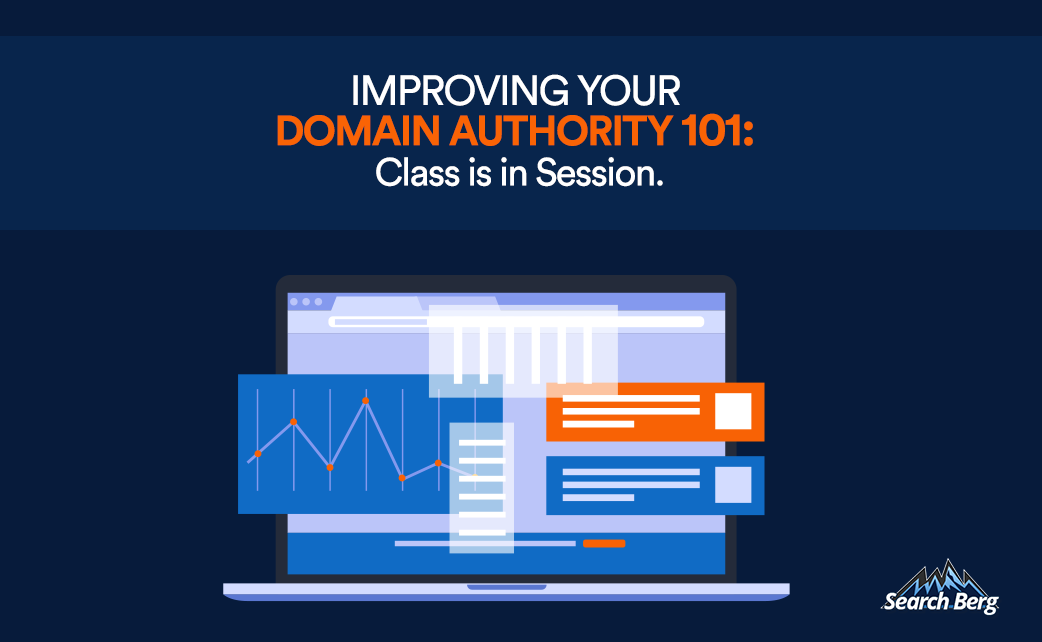What is a Good Website Domain Authority and How Can You Increase Yours?
If you’re reading this blog, chances are, you’ve come across the term Domain Authority (DA) a couple of times. But what is Domain Authority? What does it mean for your website’s performance?
To help you understand the concept and increase the Domain Authority of your website, we’ve created this comprehensive guide.
Want to increase your Domain Authority? We know how to get you there! Fill out the form to get great results!
Table of Contents
So, What Is A Good Domain Authority?
How is Domain Authority Calculated?
How to Increase Domain Authority of Your Website?
- Accept Only High-Quality, Relevant Backlinks
- Create a Link Building Strategy
- Guest Post to boost your Domain Authority
- Build Domain Authority with Content Syndication
- Create high-value content that fellow bloggers will want to link to
- Research your competitor’s strategies and consider writing power blogs
- Make sure to work on your on-page SEO
Optimize meta tags and descriptions
Use both internal and external links
What is Domain Authority?
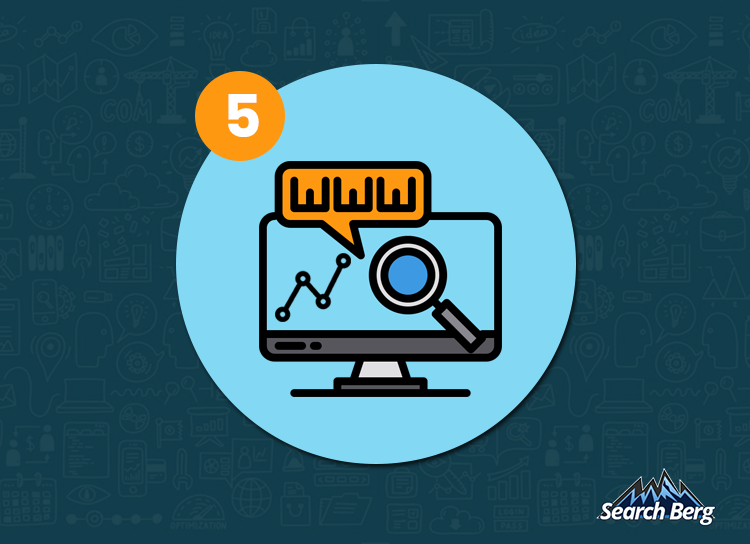
Created by Moz, Domain Authority is a ranking metric—an aggregated number—that indicates how authoritative your website is. The higher your website’s domain authority, the more easily it can rank for your target keywords.
Furthermore, Moz states that a website’s DA is calculated by assessing aspects like linking root domains and the number of total links into a DA score.
DA is scored on a scale of 1–100, with 1 being the lowest performing and 100 being the highest. New websites that have very little to no authority typically start out with a DA of 1. The top websites on the internet, including Apple, YouTube, and Google, have DAs of 100.
So, What Is A Good Domain Authority?
DA below 40 is considered poor; 40–50 is considered average; 51–60 is good; anything above 60 is excellent.
So clearly, scoring high when it comes to Domain Authority should definitely be on your business’s bucket list. But instead of focusing on getting the highest possible DA and competing with giants like Apple and Google, look at your competitors. Your goal should be to develop a higher domain authority than them.
Small businesses, for example, have a relatively lower DA overall, making it easier for competitors to scope out the landscape and improve their authority.
The next logical question is, how do you get high domain authority relative to your competitors?
There are many factors, and in this comprehensive blog, we’ll cover them all in depth.
How is Domain Authority Calculated?
Domain Authority is calculated using the total number of backlinks you receive, including root domains (among a host of other metrics). It defines the ranking capabilities of an entire website for any page it creates, including but not limited to blog posts.
It’s important to note that Domain Authority is different from Page Authority (PA). So what is Page Authority? While PA measures the ranking strength and capabilities of a single web page on a website, DA showcases the strength of the entire website, indicating the likelihood of a web page ranking when you create one. While different, PA largely depends on Domain Authority because they ultimately rely on the same factors.
So without further ado, let’s get to our comprehensive ways to increase your site’s Domain Authority.
How to Increase Domain Authority of Your Website?
1. Accept Only High-Quality, Relevant Backlinks
Your backlinks are arguably the most important factor in improving your Domain Authority score.
Backlinks are created when other websites hyperlink to your website. These links can send traffic to your websites, improve rankings, and increase your Domain Authority.
To better understand backlinks, check out our YouTube video What is Backlinking And Why is it Important for YOUR Business.
So your goal with backlinks is to make sure that they’re all high-quality and relevant to your site. Luckily, you can remove irrelevant, spammy backlinks that will harm your domain authority in the long run using the Disavow tool, courtesy of Google.
Way over your head? You can get in touch with a professional SEO company that can run a backlink audit for you to take care of that.
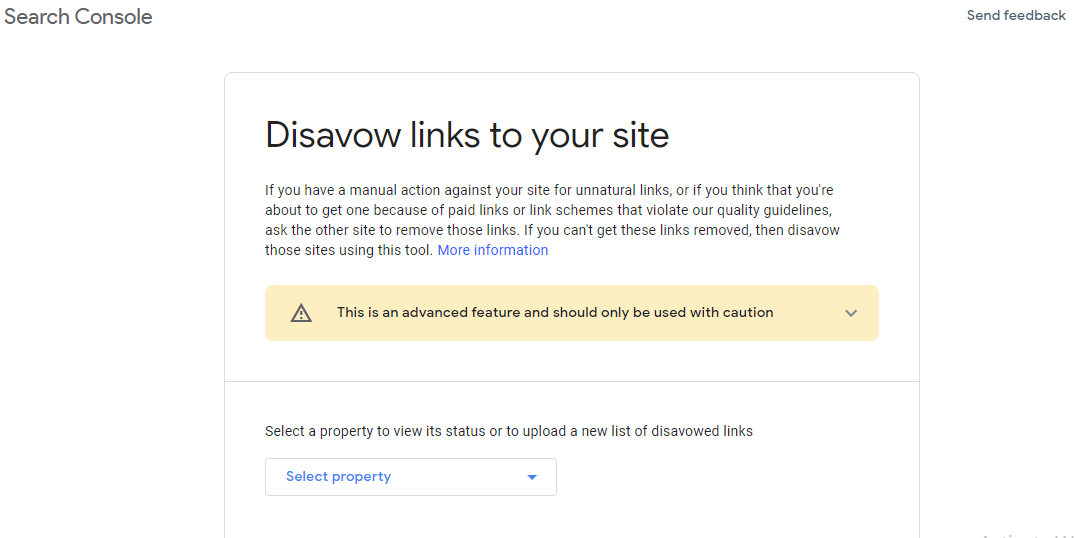
If only high-quality, relevant websites are able to link to your website, Google’s bots are more likely to trust your website’s domain authority. The industry-standard rule is that do-follow links are better than no-follow links. This is because do-follow links transfer greater “SEO juice” from the linking site to yours compared to no-follow links.
No follow links aren’t bad to have by any means—you just want to try to target more do-follow links because they’ll give you more SEO bang for your buck. Once you audit your current links and regularly remove the “trash” links, so to speak, you can focus on building more high-quality, relevant backlinks.
Pro tip
If you’re running a small business, submit your site for local roundups. These include “best XYZ” lists and/or directories that accept submissions. These are easy backlinks for you to grab for your business.
Another hack is to collaborate with local businesses that have a similar customer demographic as you. In this way, you can build mutually beneficial links that are relevant to your mutual customers. You can even work with small businesses that you already have a professional relationship with whose customer demographics would be interested in your product or service. There are more ways to build high-quality links, though.
We’ve helped hundreds of businesses increase their Domain Authority. Become one of them today!
2. Create a Link Building Strategy
Now that you know you want to maintain only high quality, high authority links and are well aware of how to disavow unwanted links, you need a strategy to build wanted links.
The first most important building block to any great promotion strategy is having something of note or value to say in your industry. The second is to promote this content using every marketing channel at your disposal.
So once you’ve created in-depth blogs (we will get into details about how to create linkable content in a future point), send it to your email list and promote it on your social media channels. Don’t underestimate organic reach even if you don’t have a sizable following yet. Use hashtags that are relevant to your industry and content to get more eyeballs on your content.
The next step once you’ve squared away what you can do on your own is to reach out to the big boys. Or, at least, the bigger boys in your industry. As long as their website has a similar or greater authority as yours, you should contact them for a backlink. You want to be subtle as opposed to making demands when you contact them. Make sure you do your research regarding their brand beforehand. If the person’s audience isn’t relevant to yours, then there’s no point reaching out.
Express gratitude for the content they publish. Here, it can help to link to a specific blog that resonated with you, one that is similar in topic to the content you are seeking to build a link with. You can then say in your email or message that you also wrote a new blog about *insert similar topic interest* and that you thought they might enjoy it as someone who writes about said topic/s.
You can end your email or message by saying that your blog/guide/article/etc. might make a helpful addition to their page. End the message on a positive note and send it off. If they like your content and think it would help their audience to read it, they will happily link to it. Many will accept, a lot will say no, and some won’t even respond. That is part of the game of link building.
Another key way to proactively build links is to strategically guest post.
3. Guest Post to boost your Domain Authority
Guest posting is when you write a piece that is to be published on a third party website instead of your own. A guest post is many times more efficient and effective at boosting your current DA score than only creating content on your native website is.
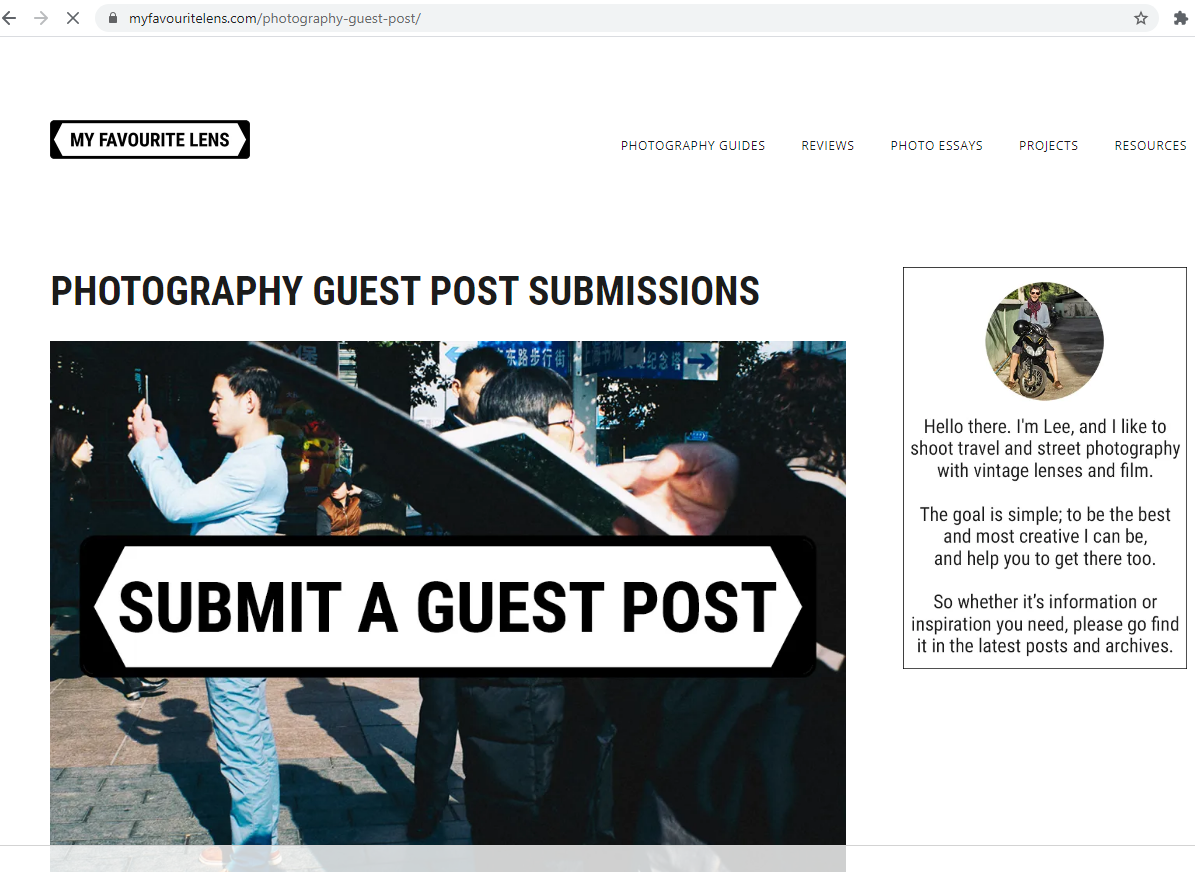
With guest posting, you will have many opportunities to link your website in your content or Author Bio yourself. Studies have shown that people are more likely to click on links within a blog while they are still gaining information rather than afterwards, once they have captured said information.
Both ways, however, provide a high quality backlink to your website from a reputable, high DA site that is sure to also boost your own DA. This is important because these links will be on high authority websites that you’ve found in your niche, showing Google that you are a thought leader in your industry.
In addition, since the new people that will read your post are already interested in your niche, this further improves the chances of them coming to your blog and linking back to your posts.
You can find guest posting websites by searching “*insert niche* guest posting websites” on Google.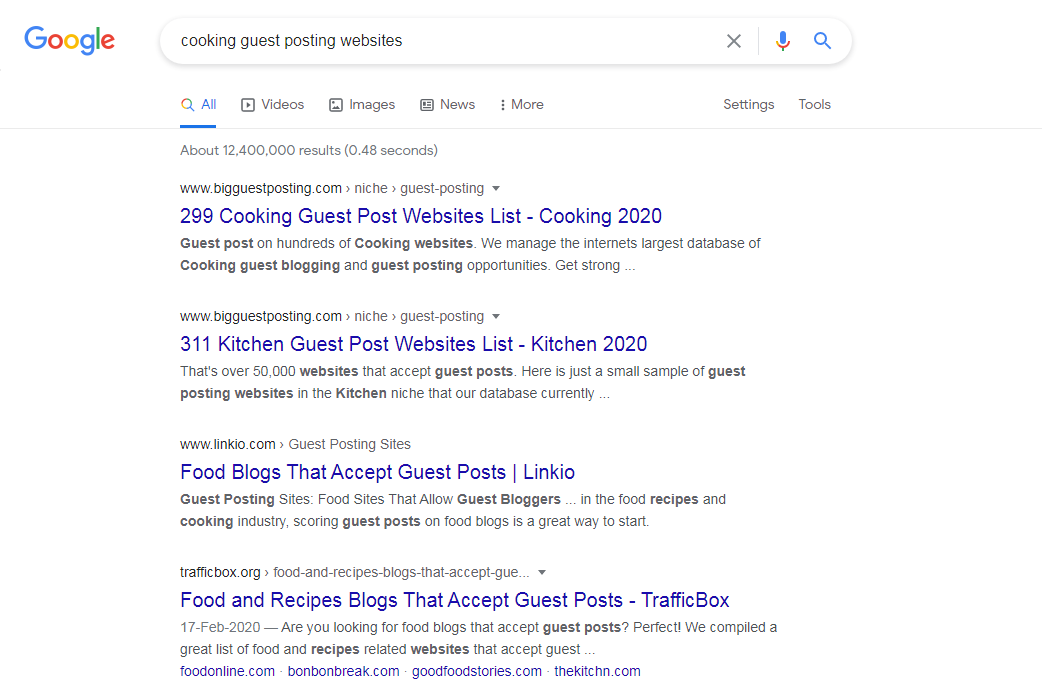
Yet another way is to locate them using key phrases such as “write for us”, “submit a post”, “submit a blog”, etc.
A final note on guest posts is to make sure that the links being provided to you are “do follow” and not “no follow“. A do follow link will help your rankings directly by communicating the link to search engines, while a no follow link will not communicate this.
Pro Tip
Since guest posting is a time intensive process, don’t mass produce content to be guest posted everywhere; instead, be more strategic about which websites will give you the biggest bang for your buck.
While this information about no follow backlinks can persuade you to avoid no follow links altogether, chances are, you will get them at some point. There’s no need to remove them as long as they are from a relevant website in your niche.
They still provide referral traffic (which influences your rankings), brand awareness, and greater social media shares and engagement. So while no follow links may not directly impact your rankings and DA, they do indirectly help so there’s no harm to keep relevant no follow links as part of your website’s backlink portfolio.
4. Build Domain Authority with Content Syndication
Content syndication is when you publish a singular piece of content on multiple websites. Note that this is separate from guest posting because, instead of creating entirely new content on a website, you are instead reposting it by giving the third party website permission to do so.
You can do this on your own using blog posting websites like LinkedIn and Medium, and even forum websites such as Quora and Reddit.
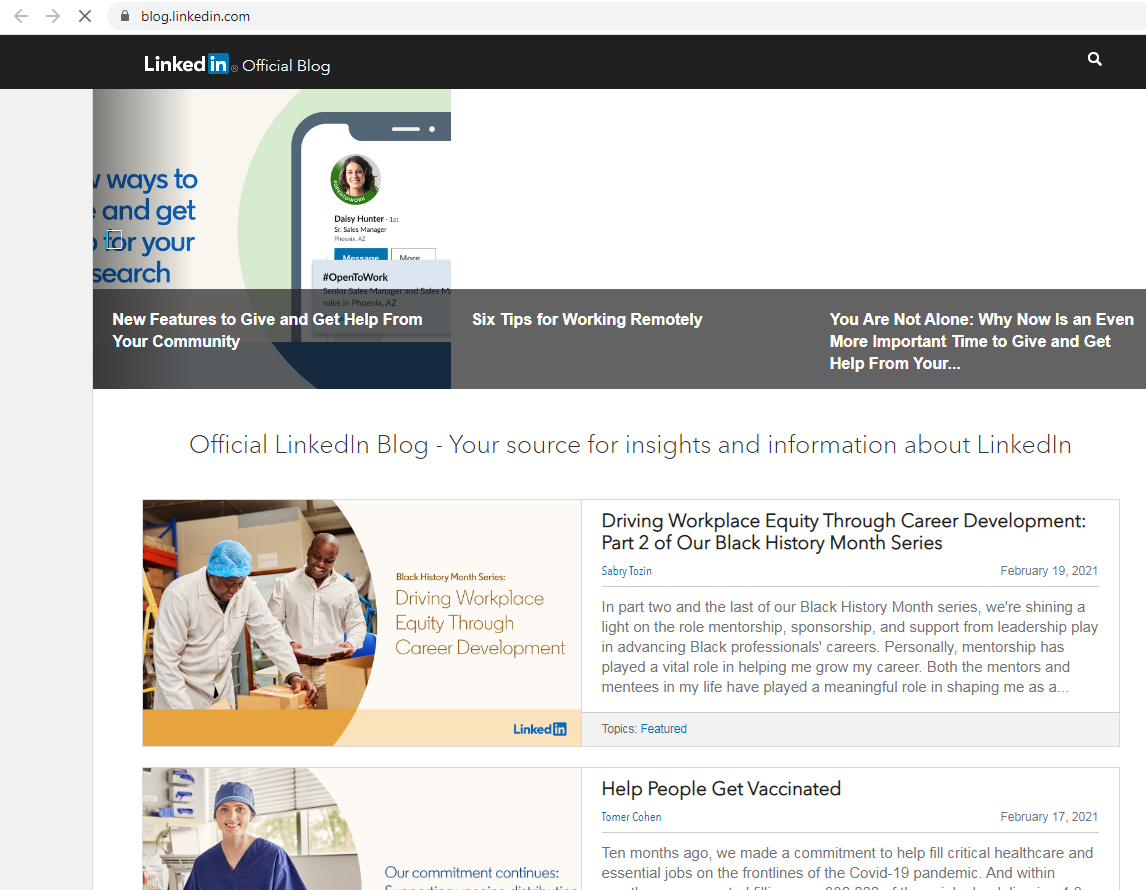
You can also reach out to websites that will republish with your permission. To find these, search “republish with permission” and add the topic you are covering in your piece or even your niche as a whole so you can explore.
When you do find these web sources where you can republish with permission, you want to reach out to them communicating the value their site will receive through republishing your specific content piece.
5. Create high-value content that fellow bloggers will want to link to
There’s a reason we keep saying that Content is King. That’s because it truly is, fit with a bombastic gold crown and silver scepter.

The truth is, you can follow every single SEO advice and tactic in the proverbial book, but, ultimately, having good SEO clears the path for a site visitor to come to your content. So if your content isn’t helpful, engaging, or even interesting, you’re going to get stuck with a high bounce rate and very minimal to no conversions.
People are searching for answers to their pain-points and concerns on the internet. If you’re the one to be able to provide them with answers in a way that makes sense to them, they’ll be grateful and are more likely to remember your site as a future resource.
Good content is helpful to build trust with your prospect. Trust leads to higher site visits, lower bounce rates, greater dwell time, and greater conversions. Yet another awesome benefit of creating high-quality content, though, is that authoritative blogs within your niche will also find it valuable.
Because your blog explains, teaches, or provides some sort of resource to them in an easily digestible manner, they’ll be incentivized to link back to your blog as a citation in one of their pieces. Therefore, your go-to strategy to increase your DA should be to regularly release high-value content for your niche.
Pro Tip
Provide valuable content that you can use is to create media-rich content such as infographics, graphs, and charts that break down complex topics in your niche into a simple picture.
One final tip we will impart here for content is if you’re wondering what kind of content to create that fills a gap, you might want to check out the content your competitors are creating and figure out what’s missing. Therein lies your opportunity.
To learn more about writing great content, be sure to check out our blog: How To Write A Blog That Ranks.
6. Research your competitor’s strategies and consider writing power blogs
If you do your research thoroughly, you’ll discover the keywords your competitors are targeting. Based on this, you’ll know what’s missing in your content marketing strategy and what you need to beat in order to rank.
Check what kind of sites are already linking to their web page. Are you able to build a Franken-blog that is the MOST comprehensive one out of all these competitors? This kind of blog, also known as a power blog, can be highly sought after by readers because it is a one-stop shop for everything they need to know about a topic. A power blog in this way can help your blog stand out.
If you still need convincing here, be sure to read our blog 5 Reasons Why You Need Power Blog PostsFor Your Website Blog.
7. Make sure to work on your on-page SEO
In addition to your off-page SEO, which includes setting up backlinks, it’s also important to work on your on-page SEO to increase your domain authority.
Update older content
The most important factor in your on-page SEO is to make sure your content is up to date and relevant to today’s audiences. If your blog has lost relevance, it will result in an increased bounce rate, which ultimately affects your overall SEO efforts, rankings, and domain authority.
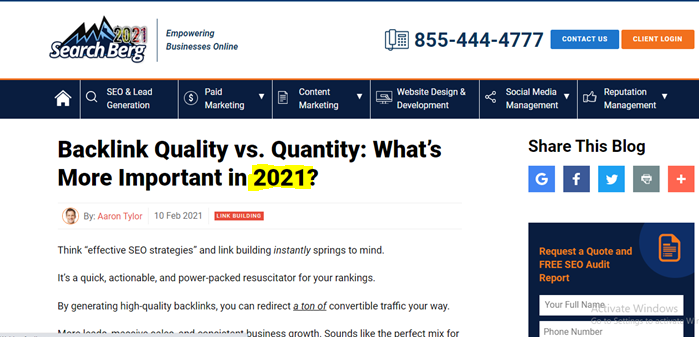
Optimize images
A feature not enough people with websites are aware of is that you can actually add more text at the back-end of every image on your website.
You can do this by updating the image’s file name and the associated Alt Text. The point of these fields is to show the text to the viewer about what’s happening in the image in case it doesn’t load, or your visitor is visually impaired. You can simply describe what your image contains and, where relevant, insert your target keywords in the Alt text.
Each page on your website will have a section in the HTML region to optimize your meta tags and descriptions.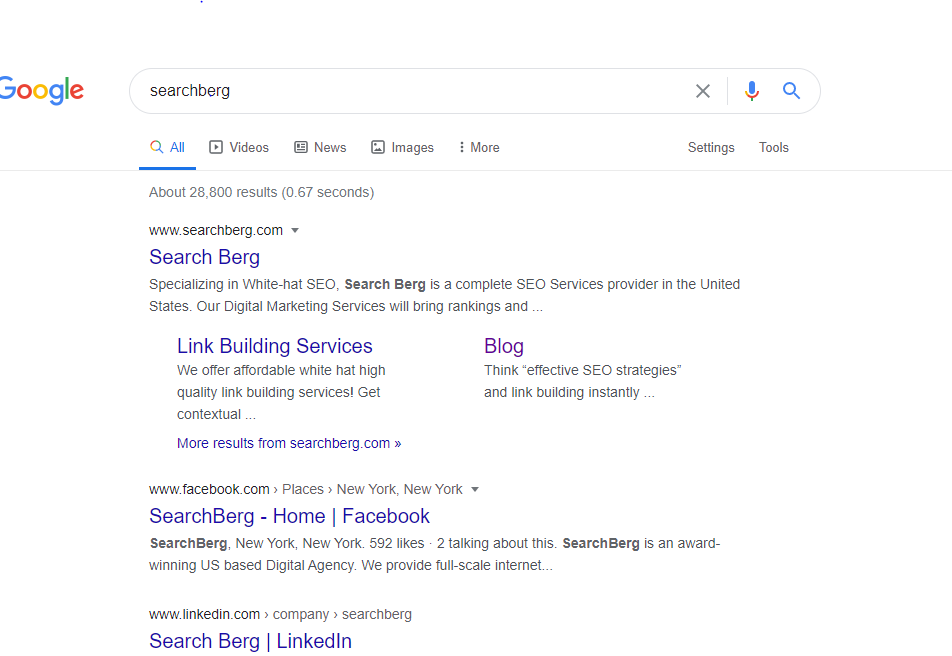
In a nutshell, these are the titles and descriptions that appear on Google when you search a term.
So if you leave your meta tags and descriptions up to chance, Google will phrase them at random. Since this is the equivalent of your store’s front sign, i.e., the first thing any of your prospects from Google search results will see, it’s worth optimizing for keywords and readability.
To discover more detailed tactics on tackling meta tags and descriptions, you can learn it all in our blog How Meta Tags Affect Your Website’s SEO.
Use keywords naturally
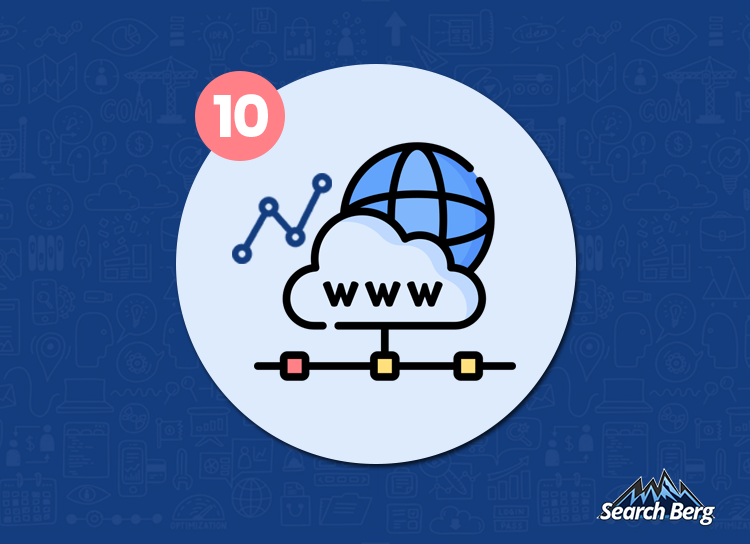
The number one practice that you want to avoid like the plague is keyword stuffing. Keyword stuffing is essentially when a keyword is “stuffed” into a site’s meta data, backlinks, web pages, etc., in an attempt to game the system and unfairly rank higher.
This may have worked very briefly a long, long time ago, but since the Hummingbird Update, Google and its robots which crawl your website have gotten very smart. Not only do they catch on if your website includes keyword stuffing, but they also penalize your website by rapidly reducing its rankings. So the best policy is to play the game by Google’s rules and win. This means using your target keywords naturally where they are relevant in your blog and web content.
The more you place your keywords based on relevancy, the greater its readability becomes, and therefore, the longer your reader is likely to stay engaged.
Use both internal and external links
Internal links are important because they create a web of interconnected pages on your website through links. The more coiled and well-connected the web is, the better Google’s Spiders can crawl it.
Who doesn’t love a good spider pun?

Internal links build a high-quality network between your web pages the Spiders can index on Google.
Building internal links also helps you “pass on” some of the authority you’ve gained from a reputable page to other specific web pages on your site for which your goal is to rank.
External links help when they are relevant because it shows you are linking to note-worthy blogs and websites related to your topics. The idea is: if you’re commenting about relevant topics within your niche, then your commentary must by proxy also be somewhat relevant.
For further on-page SEO tips to keep your visitor on your website longer, you can check out our blog 10 Proven Tips to Drastically Reduce Website Bounce Rate.
8. Fix up your Technical SEO
Your technical SEO is the foundation upon which your rankings, domain authority, and everything you’re doing for your website, stand on. You need to have your website registered on Google Search Console. Once you’ve registered, submit a file known as the “xml sitemap” of your website to Google Search Console.
This is the equivalent of giving Google a “cheat sheet” map to send its crawlers through your website. You want these crawlers all over your website because once they are, they can index your web pages.
Indexing your pages means that they become part of the Google Search results. Once you’ve completed these steps, you can actually test your pages for crawlability.
This can be done using the Fetch tool within Google Search Console. The Fetch as Google bot feature in your Google Search Console dashboard allows you to submit new and updated URLs to Google for sped-up indexing and to check whether your site pages can be crawled by Google’s bots.
To check the status of existing pages that you’ve already been in the process of indexing, you can use Google’s URL Inspection Tool.
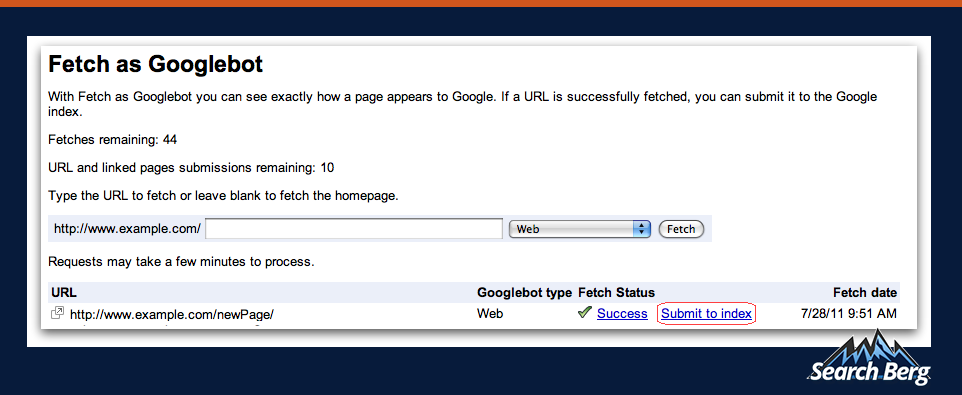
Crawlability problems, in particular, are frustrating because they mean that even if all the right elements on your website are in place, you are still missing out on some SEO juice that can impact your domain authority score.
Thus, it’s important to regularly audit your website for crawlability problems including problematic redirects, links that don’t work, 404 pages, irrelevant or outdated content links, etc.
Another major focus area to improve your DA should be social signals.
9. Social Signals
Social signals are social media engagements and shares. They’re important because they indicate to Google that your content is creating buzz and is relevant within your niche.
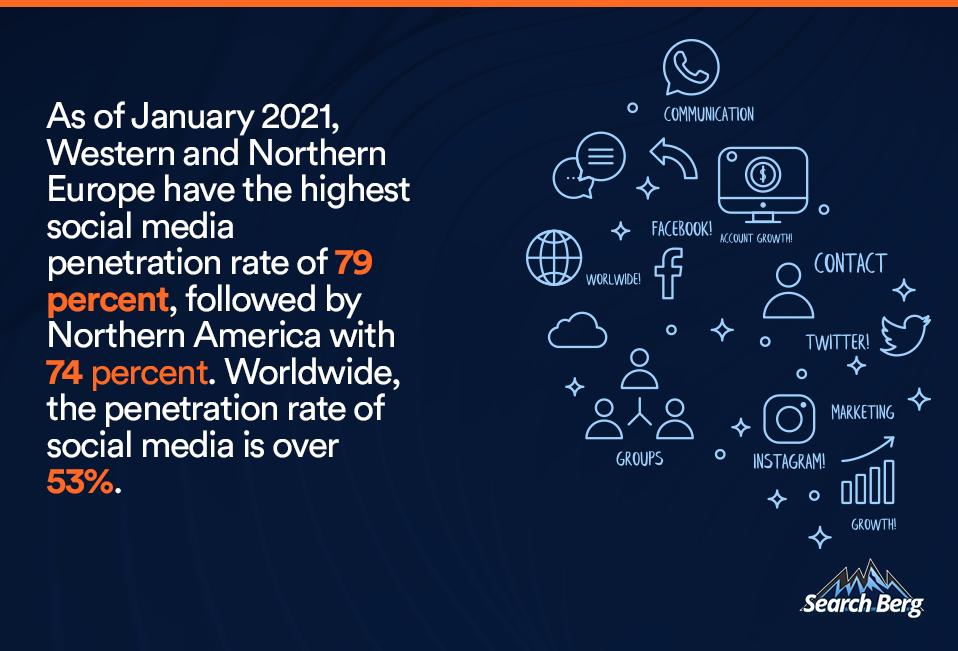
While Google has maintained that Social Signals are not an official ranking factor, there’s a huge correlation between pages that rank well and their social media presences. High-ranking pages have great social media presence and engagement metrics.

This means building your brand and/or small business’s presence on social media is an integral step to take if you want to secure a high Domain Authority.
Whether you start with LinkedIn, Facebook, or Instagram, the key is to build your brand and engage with your customers in a meaningful way. Take the key principles from our content section in this blog and apply them here. You want to provide value, and on social media, this can be as simple as bringing positivity to someone’s newsfeed.
To learn more in-depth strategies for each social media platform stated previously, be sure to check out the links above. To binge-learn how to create high-quality social media content for your business and improve your engagement, here’s a list of our social media marketing blogs for businesses to help you out.
Specifically to improve your SEO and therefore, DA, we suggest reading our blog Social Media and SEO: How to Use Social Media to Improve SEO Rankings.
10. Mobile Friendliness
Making sure your website is mobile friendly is important for three key reasons:
- Mobile friendly sites are easier to use, providing a more high quality user experience
- They are looked upon more favorably by Google’s ranking system
- Thus, they are more likely to secure backlinks, so it’s a key way to improve your site’s Domain Authority.
Since Mobilegeddon in 2015, Google has cracked down on websites which are not friendly to use on a mobile device or smartphone and rewards those sites that are.
So if a website is easy to use on a smartphone or a tablet, then Google notices and ranks that site higher in the search results for the site’s target keywords.
If it’s not, however, then the algorithm punishes the site by reducing its rankings and pushing its web pages lower in search results.
You can easily measure your website’s mobile friendliness capabilities using the Google Mobile Friendly Test Tool.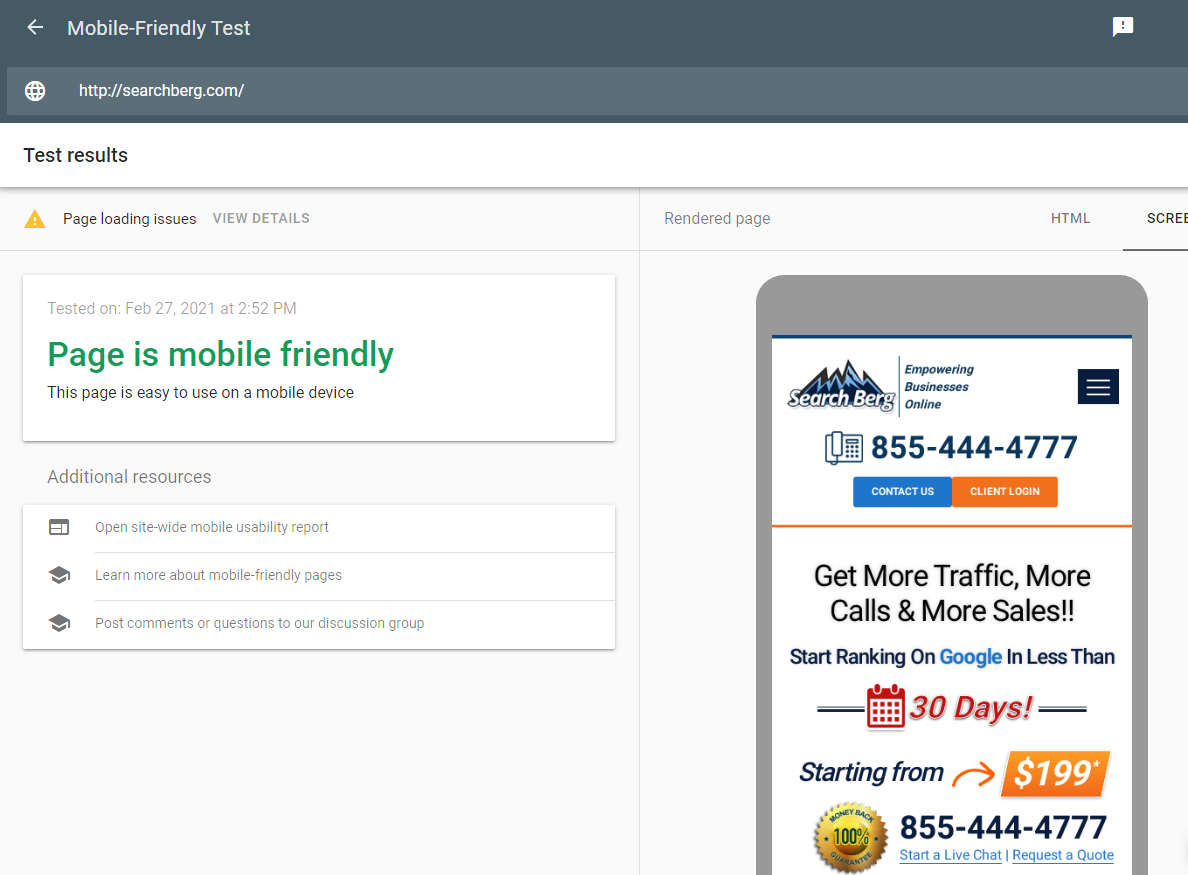
Wrapping Up!
In this blog, we dove into the deep end to learn all about website DA and how to increase domain authority.
While many of these tips can easily be performed by an everyday Joe who is just learning about domain authority and discovering the world of SEO, it will definitely speed things up and prevent errors if you consult with professionals who have been in the game for a long time.
We, at Search Berg, can help you increase your website’s domain authority today. Call us at 855-444-4777 to kick-start your domain authority score and SEO rankings or fill out the form below!

